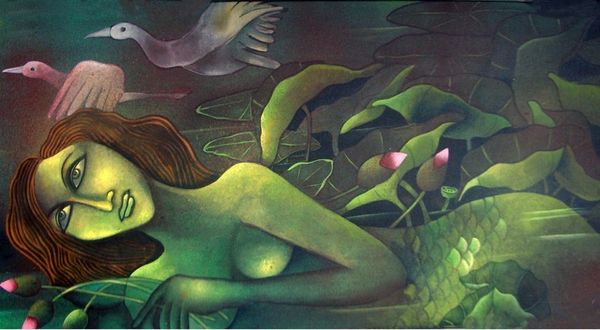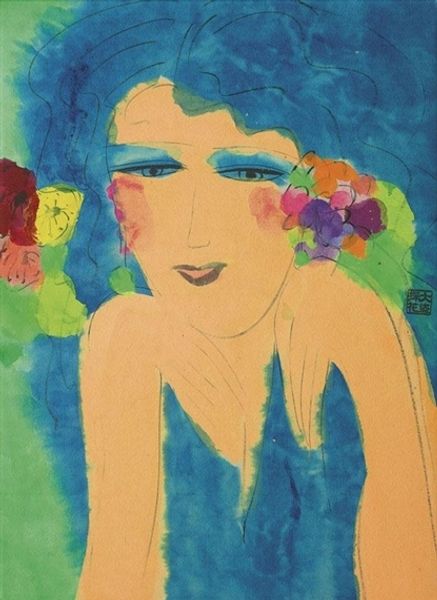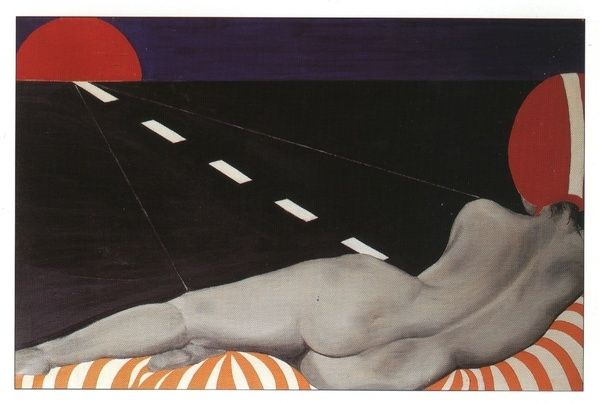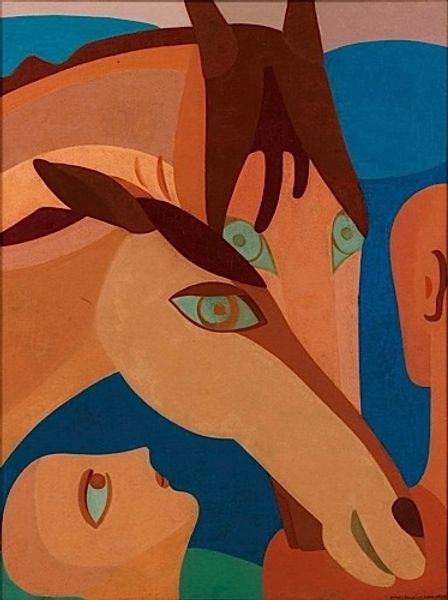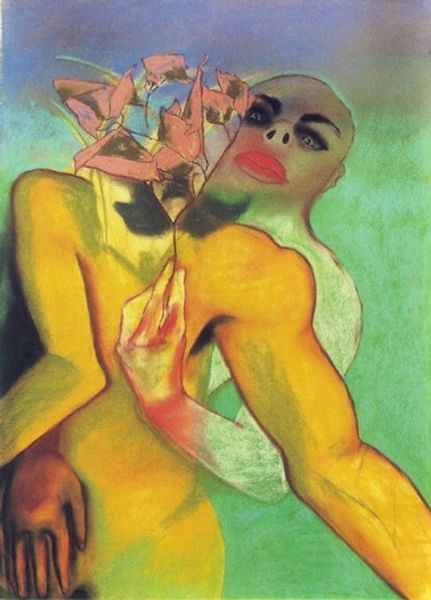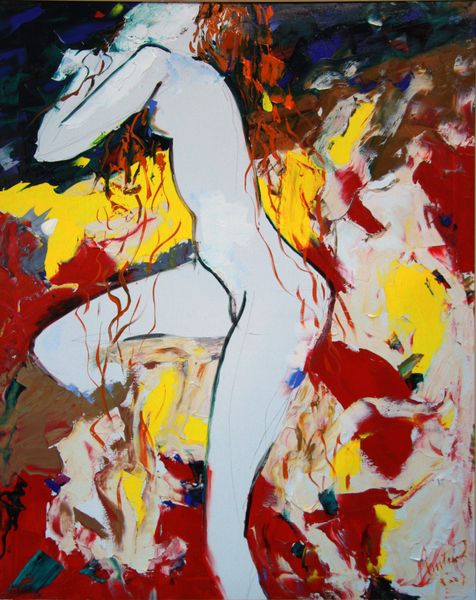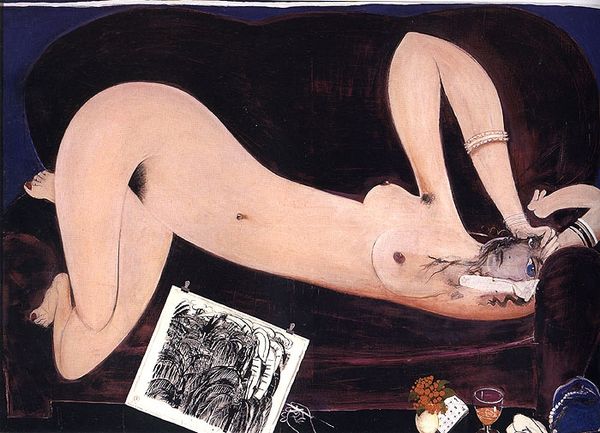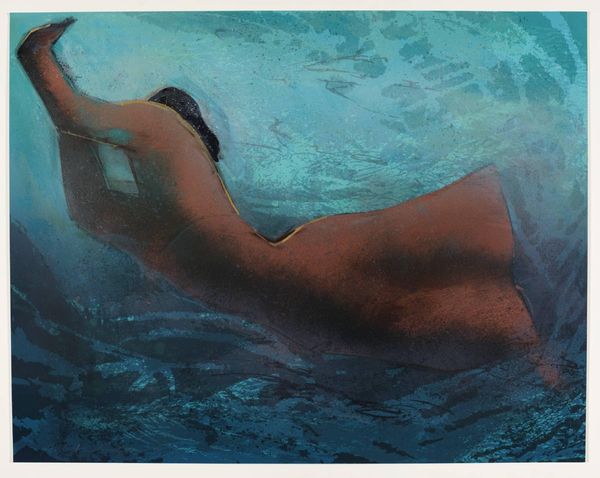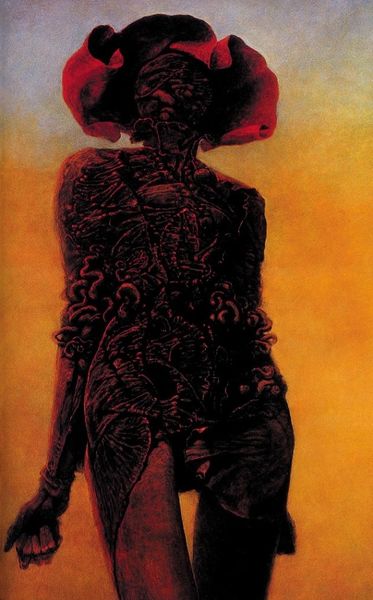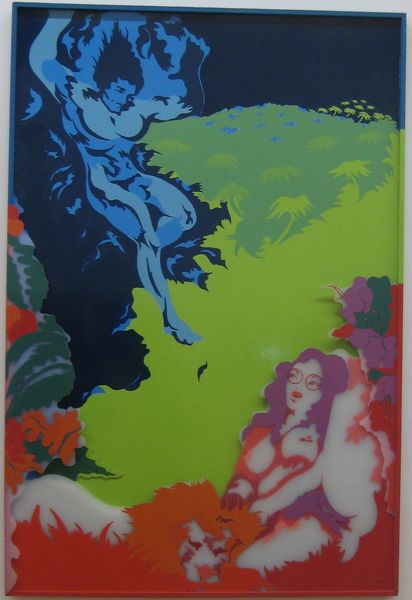
collage, painting, acrylic-paint
#
portrait
#
collage
#
painting
#
acrylic-paint
#
figuration
#
acrylic on canvas
#
spray can art
#
facial painting
#
pop-art
#
human
#
nude
#
portrait art
#
modernism
Copyright: Martial Raysse,Fair Use
Curator: I’m immediately struck by the sheer luminescence of the yellow that dominates Martial Raysse's "Yellow and Calm Nude," created in 1963. There is something so warm and still about it. Editor: And a product of its time, the '60s, when everything was rapidly changing. Raysse is very self-aware in positioning his subject here. This piece—a work made with acrylic paint and collage—grapples with objectification while engaging in it. Curator: Objectification certainly exists here, but is it challenged, maybe even reclaimed by this... unusual background choice? We see, alongside her form, an almost dreamy floralscape abutting what appears to be a landscape vista right out of a postcard, a travelogue to somewhere quite sunny and possibly very luxurious. Editor: Yes, exactly. The visual language of advertisement. She, as the central image, the calm nude, becomes both subject and commodity within this collage. Consider, too, the significance of that synthetic yellow applied so liberally. The very artificiality screams a particular kind of performative femininity that the decade both marketed and pushed back against. Curator: The yellow casts her into an ethereal glow, like an almost saintly figure pulled directly from an advertisement. I wonder what Raysee wants us to see in her gaze – which is partially obscured. Is it resignation? Serenity? It carries a heavy psychological weight regardless. Is the pop-art sensibility subverting, reinforcing, or ironically commenting on these societal norms? Editor: All of those tensions, and none resolved. The collage technique feels pointed; like the woman’s identity itself, the pieces barely coalesce. The artist sets up these jarring contrasts and forces the viewer to do the work. There is something uncomfortably modern about it. Curator: "Uncomfortably modern" – I think that hits on a crucial aspect. It's not simply a painting of a nude; it’s a loaded question about the representation and societal positioning of women. Editor: Precisely. It lingers in the uncanny space between object and human, representation and reality, offering a lens onto gendered artifice that is still powerfully relevant to conversations around femininity today.
Comments
No comments
Be the first to comment and join the conversation on the ultimate creative platform.

